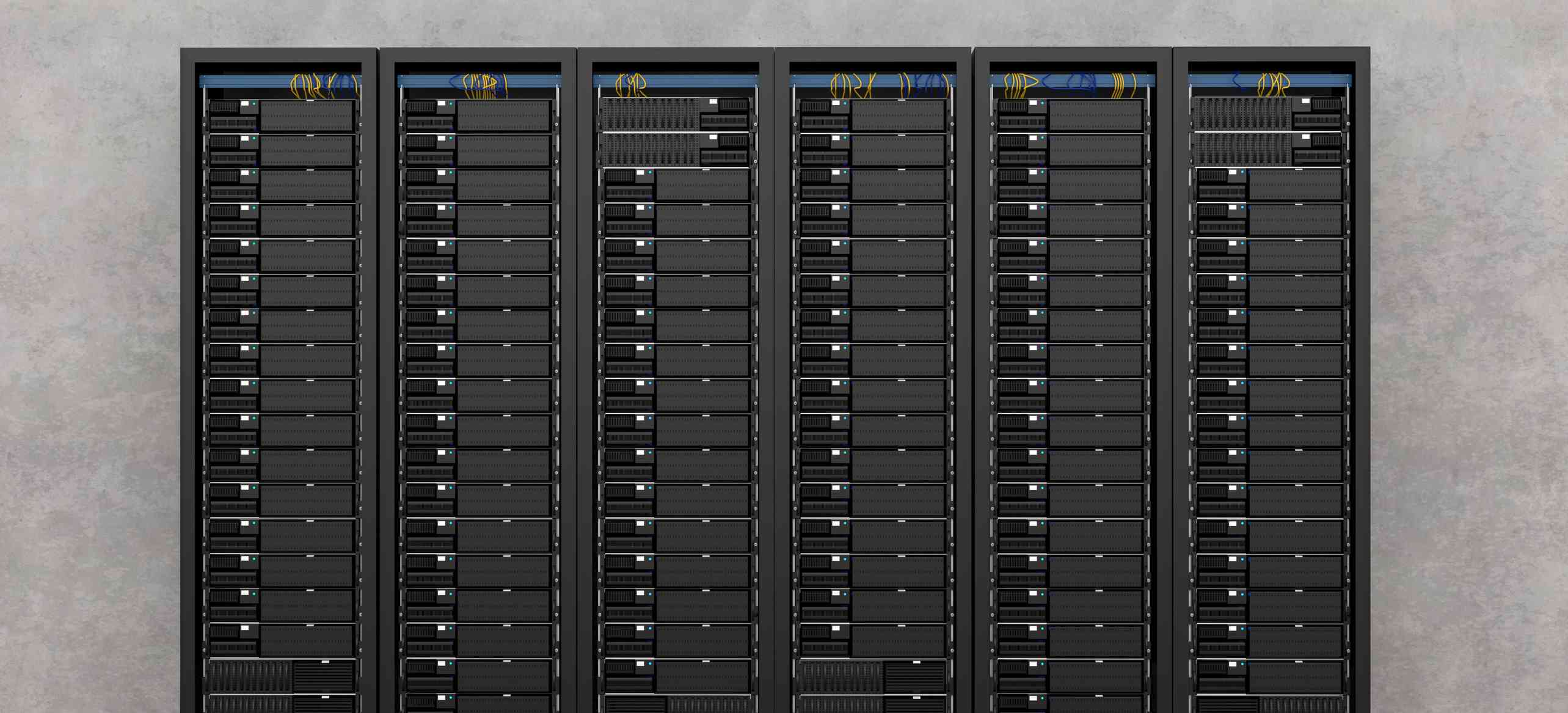Traditional on-premises servers have long been the established norm in enterprise IT for data management, while cloud servers have gained significant traction among businesses. Despite the allure of cloud solutions, concerns around security and compliance often uphold on-premises servers as the preferred choice. However, a deeper examination of on-premises servers and their functionality is crucial to gain a comprehensive understanding of their potential drawbacks and how they operate in comparison to cloud alternatives.
To objectively compare the financial implications of on-premises servers, we have outlined the hidden costs below.
What is an On-Premises Server?
An on-premises server refers to a physical or virtual computer system that is installed and managed by an organisation within its own physical premises or on a network under its control. These servers are not hosted by a third-party provider, unlike cloud-based servers. On-premises servers offer organisations direct control over their data and IT infrastructure, providing a high degree of customisation and flexibility.
How Does an On-Premises Server Work?
On-premises servers typically operate within the organisation’s local network, allowing employees to access them directly without requiring an internet connection. This local accessibility ensures faster response times and reduced latency, particularly for applications that require real-time data processing or frequent file transfers.
The organisation’s IT team is responsible for managing and maintaining the on-premises servers, including installing and configuring software, applying security patches, and troubleshooting any hardware or software issues. This responsibility entails a significant investment in IT expertise and resources, as well as ongoing maintenance costs.
On-premises servers can be used to host a wide range of applications, including file sharing, email services, enterprise resource planning (ERP), customer relationship management (CRM), and web servers. The specific hardware and software configurations of on-premises servers vary depending on the organisation’s needs and budget.
Uncovering the Hidden Expenses

Server Hardware and Operating Systems
Acquiring and maintaining server hardware, including racks, power supplies, and cooling systems, can be a substantial upfront investment. Additionally, purchasing and maintaining licenses for server operating systems and related software, such as virtualisation platforms and management tools, adds to the ongoing costs.
Database Software and Backup Infrastructure
Investing in database software licenses, particularly for enterprise-level solutions, can be a significant expense. Procuring and maintaining backup hardware, such as tape drives or storage arrays, as well as backup software, is crucial for data protection and disaster recovery.
Infrastructure Maintenance Costs
Establishing a dedicated server room with proper air conditioning and ventilation systems to prevent hardware overheating is an upfront cost. Maintaining the server room’s climate control and powering the server hardware contribute to ongoing energy expenses.
Implementation Expenses
Installing and configuring server hardware and software on-site requires specialised expertise and can be labour-intensive. Adapting the organisation’s physical infrastructure, such as cabling or network upgrades, to accommodate the new software may incur additional costs.
Training Expenses
Conducting training sessions for employees at the organisation’s location involves fees for trainers, including travel and accommodation expenses. Developing training materials, such as manuals, presentations, and software documentation, requires additional resources.
Security Risks
On-premises servers are susceptible to physical threats such as theft, vandalism, or natural disasters. Implementing adequate security measures, such as secure access controls, surveillance systems, and disaster recovery plans, can be costly. Additionally, protecting sensitive data stored on on-premises servers requires ongoing investments in security software, firewalls, and data encryption solutions.
Ongoing Hidden Costs of On-Premises Servers
System Administration Expenses
Maintaining an on-premises software system requires ongoing labour costs for system administrators to handle tasks such as timely patching of the operating system and virus scanner, as well as regular system backups. These administrative tasks are crucial for ensuring the system’s stability, security, and data integrity.
Server Maintenance Expenses
On-premises servers require ongoing maintenance to keep them functioning optimally and prevent hardware failures. This maintenance includes tasks such as cleaning, inspecting, and replacing components as needed. Regular server maintenance helps to minimise downtime and extend the lifespan of the hardware.
Data Loss
On-premises data is vulnerable to loss due to hardware failures, virus attacks, security leaks, or human error. Data loss can have severe consequences, including financial losses, reputational damage, and legal liabilities. On-premises software systems are also exposed to a range of security threats, including viruses, malware, and cyberattacks. Protecting against these threats requires ongoing investments in security software, firewalls, and data encryption solutions.
Software Updates
On-premises software typically requires regular updates to address security vulnerabilities, fix bugs, and introduce new features. These updates can be costly, especially for enterprise-level software.
Hardware Upgrades
As technology advances, the hardware requirements for on-premises software may also increase. This can necessitate hardware upgrades, which can be expensive and disruptive to operations.
System Downtime Costs
On-premises software systems are not immune to downtime, which can disrupt operations, lead to lost productivity, and frustrate customers. Downtime can be caused by hardware failures, software glitches, or human error.
Azure Hybrid Solutions
Microsoft Azure stands out as a premier hybrid cloud solution, offering a comprehensive suite of tools and capabilities that seamlessly integrate on-premises infrastructure, diverse cloud environments, and edge computing. This holistic approach empowers organisations to harness the agility and scalability of the cloud while leveraging their existing investments.
Azure Arc and Azure Stack are the cornerstones of Azure’s hybrid strategy. Azure Arc extends Azure services to on-premises, multicloud, and edge environments, enabling centralised management and consistent governance. Azure Stack, on the other hand, provides a consistent platform for developing and deploying applications across hybrid cloud environments, ensuring operational consistency and robust security.
Azure’s hybrid offerings cater to a wide range of business needs, from virtualised hardware for traditional IT applications to cutting-edge PaaS solutions. This diverse suite of tools facilitates hosting applications and workloads, extending Azure services, and providing comprehensive security and operational tooling for hybrid scenarios.
How Intelliworx Can Help

Effective data flow is the cornerstone of achieving business goals, whether you’re seeking a Software-as-a-Service (SaaS) solution for specific needs, transitioning processes and data to a cloud integration platform, or aiming to enhance responsiveness as a SaaS organisation. Integration serves as the linchpin for seamless data flow and drives business success.
Intelliworx empowers businesses with a scalable infrastructure catering to any-to-any hybrid integration, data transformation, secure file transfers, and comprehensive visibility across dynamic ecosystems. This platform seamlessly integrates ground-to-cloud and cloud-to-cloud environments, effortlessly linking applications, storage, and business platforms to ensure seamless data connectivity, whether on-premises or in the cloud.
Intelliworx empowers both business and technical users through self-service and managed services, enabling them to create, manage, and oversee a spectrum of B2B, application, cloud, and data integration processes.
Partner with Intelliworx today to discover how you can seamlessly integrate critical on-premises and cloud applications that drive your business forward and achieve your strategic goals.








